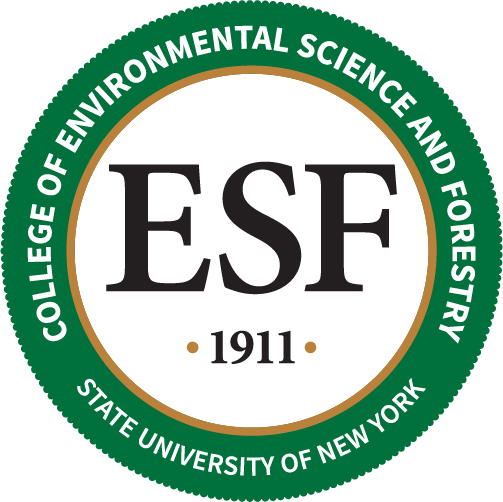Newswise — The Solvay Settling Basins, the scene of years of industrial pollution on the shores of Syracuse's Onondaga Lake, is the setting for a novel approach to restoring brownfield sites for beneficial use.
Instead of capping them with clay and plastic, fencing them, and posting "Keep Out" signs, a partnership of engineers, scientists and new corporate owners has taken a different tack on a portion of the site: Restore the ecosystem. Remediate the environmental concerns. Grow and harvest something useful.
Then invite people in.
"We're in such proximity to the urban core of Syracuse that this can be a destination for people who live in Central New York," said Dr. Douglas J. Daley, who teaches environmental resource engineering at the SUNY College of Environmental Science and Forestry (ESF) in Syracuse. "They can come out for recreational purposes and, at the same time, experience how this restoration process works."
The settling basins present an unusual set of circumstances: a large area (more than 1,000 acres) that contains industrial waste (mostly the mineral calcium chloride) in what was once a unique ecosystem (an inland salt marsh) on the edge of a mid-size city.
ESF has worked at the site, known as the Solvay Settling Basins, in partnership with Honeywell International, which owns the land. The settling basins contain the by-product of soda ash production conducted by a previous industrial operation.
The settling basins are part of a larger area that was once covered by an inland salt marsh. The area now includes Alliance Bank Stadium, home to the minor league Syracuse Chiefs baseball team; the bustling Central New York Regional Market, one of the oldest farmers' markets in the state; and the regional transportation center that is a hub for train and bus travel.
The site borders the city of Syracuse and is bounded on two sides by highways. To the east is Interstate 690, the major east-west corridor through the city of Syracuse, and to the south is New York Route 695, which links communities in western Onondaga County.
"Humans have developed the area for their benefit but, unfortunately, destroyed a relatively unique environment: an inland salt marsh," Daley said. "We're trying to reclaim some of that lost ecological history on an otherwise unusable site, while providing a benefit, both now and in the future."
One of his ESF colleagues, Dr. Donald Leopold J. Leopold is working on restoring the salt marsh. He and his students are planting native prairie grass, dune plants, and salt marsh species that will contain saline runoff, prevent erosion, and create wildlife habitat. Interestingly, the industrial waste, which contains a lot of chlorides, is salty, and contributes to growing conditions not unlike those that exist naturally in a salt marsh.
ESF's Dr. Timothy Volk leads an effort to grow shrub willow on the settling basins. The willow can be harvested, chipped and transported to an upstate biomass plant for use in its electric power facility. Harvesting has already begun, marking the first time productive willow shrubs have been grown at a site where former industrial operations resulted in soil with a high ph content, meaning it is unusually alkaline. Honeywell fertilized the site several years ago with biosolids that were the byproducts of a wastewater treatment operation, said Volk, who helps lead ESF's short-rotation woody crops program. He said the fertilization enhanced the growth of the willow shrubs, which typically do not thrive in such conditions.
Daley said the healthy willow crop demonstrates the long-term success of using biosolids and yard waste mulch in brownfield redevelopment projects.
"We're using other waste generated in an urban environment, harnessing that energy and those nutrients to do something good," Daley said. "And the 'something good' is both raising willow for energy and supporting the ecological restoration. It's unusual to bring all these approaches together in a large, complex problem."
Daley is working on a computer model to demonstrate the likely success of a system comprised of willow plantations, salt marshes and drainage swales, known in engineering circles as an evapotranspiration landfill cover system. All the elements work together to reduce the percolation of water into the wastebeds.
In addition to generating energy through a sustainable source, this system provides other benefits, Daley said. Conventional landfill covers require mowing grass and aggressive measures to reduce the number of animals that could dig into and damage the cover material, and fences to keep out trespassers. Part of this site will eventually provide animal habitat and encourage recreational use for area residents.
"A conventional approach, by itself, won't solve the long-term problem, so we're taking a systems approach to it," he said. "It's a unique solution to a unique problem."
